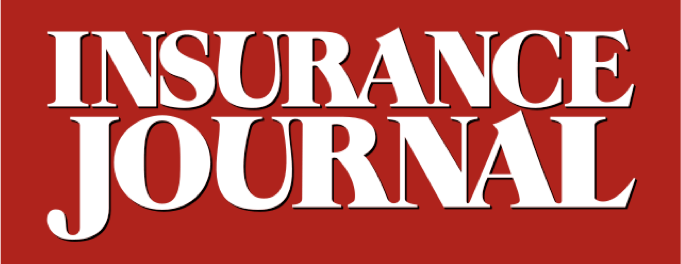“Are you being serious?”
Christopher Swift, chair and chief executive officer of The Hartford, was taken aback by a question from an analyst during the company’s second-quarter earnings call about the impact of litigation finance on the insurer’s results.
“It’s showing up in our loss trend, [and] our allocated loss expenses. We’re spending more time and money on something that turned our judicial system into a gambling system. Are you serious?”
The analyst restated the question, explaining to Swift that he is aware that a variety of issues come together to create social inflation. What he wanted the CEO to pin down was the isolated impact of third-party litigation funding, apart from factors such as negative public sentiment and eroding tort reforms.
Swift didn’t have figures to share. But two months earlier, an actuary speaking at the Casualty Actuarial Society’s Seminar on Reinsurance, said the top end of a range of estimates of direct costs that will be paid to funders by casualty insurers is $25 billion over a five-year period (2024-2028).
Mike McComis, a senior manager for EY and a Fellow of the Casualty Actuarial Society, revealed the results of a model developed by his firm last year to measure the impact of litigation funders, using some information from funders’ reports about annual returns and a variety of assumptions to develop the figure. McComis gave an overview of the steps involved in constructing the model and flagged some of the most tenuous assumptions—including a somewhat shaky guess that insurers will pay about 90% of funders’ returns.
He also provided a range of estimates based on 720 scenarios tested with the model, revealing that the five-year cost is most likely to fall between $13 billion and $18 billion (the 25th to 75th percentile), with a mid-range average coming in at around $15.6 billion for the five years from 2024-2028.
(Editor’s Note: McComis revealed that the EY study was performed late last summer, which explains why the estimates begin with the year 2024.)
The figures, he said, represent direct costs—the portion of TPLF returns that come out of the coffers of P/C insurers. But then there are indirect costs to consider.
“That’s just how much the funders are making. The other element to this is where is that funding going,” he said, suggesting that when funding goes to law firms, they may be able to advertise more, bring in more cases, and fight claims longer. “They have this capital backing which means they don’t have to settle for cash flow reasons,” he said.
This adds an indirect cost to insurers, he said, noting that when cases go on longer, insurers have to pay more legal fees. “There’s also the potential ability of this to drive up actual results for the plaintiffs, the injured parties themselves,” he said, referring to rising verdict and settlement trends presented by co-panelist Jonathan B. Hayes, managing director and reinsurance actuary at Aon.
“Presumably more of that should be going to the injured parties,” he said.
While McComis and his colleagues didn’t unearth evidence of that as they undertook a massive research project to develop inputs for the model, he did say there is one study that puts total costs, including indirect costs, at roughly double the amount of direct costs. Without identifying the source, McComis noted that if this were true, the high end of the range—now $50 billion—could add 7.8 points to the commercial liability industry loss ratios for each of the next five years, with the most likely scenario (50th percentile) falling between 4.5 and 5.5 loss ratio points. (McComis estimated the loss ratio boost using 2023 earned premiums for commercial auto liability, other liability occurrence and medical professional liability.)
 Returning to the direct costs modeled by EY, McComis displayed line graphs plotting the most likely (25th and 75th percentile) modeled estimates, as well as the minimum and maximum modeled estimates for each year from 2019 through 2028. Most-likely estimates shown on the graphs started at about $1 billion in 2019, growing to $2.5 billion in 2019, and then climbing to around $3.5 billion by 2028. The lines plotting each year’s minimums and maximum estimates showed similar trajectories. Summing up the results in terms of two five-year periods, McComis observed that the model forecasts “basically a doubling effect”—with direct costs of TPLF to the P/C industry increasing by 75-100% for the early five-year period to the subsequent five-year period.
Returning to the direct costs modeled by EY, McComis displayed line graphs plotting the most likely (25th and 75th percentile) modeled estimates, as well as the minimum and maximum modeled estimates for each year from 2019 through 2028. Most-likely estimates shown on the graphs started at about $1 billion in 2019, growing to $2.5 billion in 2019, and then climbing to around $3.5 billion by 2028. The lines plotting each year’s minimums and maximum estimates showed similar trajectories. Summing up the results in terms of two five-year periods, McComis observed that the model forecasts “basically a doubling effect”—with direct costs of TPLF to the P/C industry increasing by 75-100% for the early five-year period to the subsequent five-year period.
McComis referred to the conclusion of a separate EY analysis of Schedule P data, which showed no let-up in social inflation post pandemic—with continued commercial auto calendar-year paid claim severity trending at 9.6 percent on average, and other liability at about 15 percent. Putting that together with this model’s results, McComis said social inflation trends will persist at a heightened level for longer.
“We haven’t even seen the full impact of this [TPLF] industry because it’s growing, it’s lagged three-and-a-half or four years (the assumed model time frame between TPLF investment and settlement, based on funders’ reports), and they’re making massive returns (around 25-30%, another model assumption).
The model, he said, has “solidified our belief” that TPLF “is going to be one of the key drivers, if not the key driver of the heightened social inflation-impacted trends going forward, and probably has been in the last several years.”
Building a Model
In fact, actuaries in attendance, who were polled about the likely cost of TPLF to commercial insurers over the next five years, mainly guessed $10-20 billion, not foreseeing the $50 billion potential high-end figure, including indirect costs.
Estimating the cost is not straightforward, McComis indicated, as he explained his firm’s effort to build a model. It is challenging to identify cases helped by TPLF because there have historically been few requirements to disclose litigation funding (something that is changing now some states).
That means actuaries can’t tackle the TPLF cost question with a bottom-approach of extrapolating from historical data. EY chose a “top-down approach” instead, estimating the portion of returns earned by funders based on returns that some funders have reported in their financial reports, and allocating a share to P/C insurers.
McComis and colleague Abbi Brucea, also a fellow of the Casualty Actuarial Society, started the modeling with 80-plus hours of research through, poring over publicly available and industry reports from firms like Swiss Re and Aon, to derive several key insights:
- Average annual returns from TPLF activities are in the 25-30%, based on funders’ reports that have posted earnings anywhere from 22% to an outlier of 77% in the past 5-7 years.
- 85-90% of funded cases succeed, reflecting the selectivity of funders, which some sources said only accepted 5% of commercial cases submitted to them. (The acceptance range extended from 5-20% based on documents reviewed by EY.)
- Commercial litigation funders’ assets under management are growing at a rate of 8.7% per year.
McComis said the last assumption, which came from a past Swiss Re report, would have produced an estimate of $16.5 billion for 2024, noting that this is close to a separate estimate EY derived by fitting a curve to actual AUM amounts reported in a separate industry report for 2019-2023 ($16.1 billion).
McComis went on to describe how EY used this information to derive key assumption for three building blocks of the EY model:
- The amount of capital invested by the TPLF in new cases by calendar year.
- TPLF dollar returns on investment by calendar year.
- The dollar impact to the P/C insurance industry.
For each block, EY selected a range of reasonable assumptions from its research and modeled 720 scenarios, he said before delving into some of the details of modeling building block No. 1: How much money gets invested in new cases each year.
Beyond AUM and growth rates, the model needed a range of assumptions about the level of commitment, he said, displaying the assumptions of one scenario that assumed 20 percent of AUMs were committed to new cases. Likening the concept of commitment to a home equity line of credit, McComis explained that funders don’t actually earn anything until the “lifeline of funds,” or amounts they’ve promised to invest in a case are actually used. According to one of the reports EY read as part of its research, funders deployed 78% of their commitments, on average, when cases were resolved, he said.
Moving from the deployed amounts to the second building block—TPLF earnings on their investments in commercial cases—McComis noted that while EY generally assumed 25-30% returns per year, the model included scenarios assuming that that will decrease over time. “As this market [becomes] more saturated, maybe [TPLFs] won’t be as successful and so they have more losses,” he said.
The model also required assumptions about the time to resolve cases. “That determines the stopping point of how much interest or return they’ve earned,” he explained, noting that the model assumed three-and-a-half to four years as the midpoint of a fitted distribution.
Finally, the model moved from the sum of the modeled calendar-year projected returns for the TPLF industry to answer the ultimate question for actuaries and insurance executives: How much is the P/C insurance industry going to have to pay for that?
“Some of this is not going to be paid for by the [P/C] industry, but [instead] will be absorbed by consumers and corporations,” McComis said, noting the presence of deductibles or self-insured retentions, and increasing commercial insurance costs that may prompt some insureds to increase retentions and reduce towers. EY selected 90% as its best estimate of the portion of TPLF returns that would be paid by insurers, putting a range of scenarios around that in the model.
“Honestly, there’s not any really good public information out there” to pinpoint a number, McComis said. “But our belief was that a large proportion of this will be paid by the insurance industry in some fashion, whether it’s the primary insurers, excess or reinsurers,” he said. “These are generally cases that are pushing things up into the excess and umbrella layers,” he reasoned.
Takeaways for Actuaries and Executives
“We believe that TPLF is the most significant and measurable driver of social inflation,” said a caption on slide that graphed the modeled outputs of minimum, maximum and most-likely direct costs of TPLF to the P/C industry by year.
From an actuarial perspective, for pricing and reserving, “the trends are going to stay high in our opinion,” McComis said, referring to the upward trajectories of the curved line graphs from 2024 through 2028. “So, you shouldn’t be backing off on those,” taking down earlier assumptions. “If you are, we think you’re ignoring the impact of third-party litigation funding continuing to persist these trends.”
A slide displayed as McComis concluded his presentation included various bullet points referring to the increased duration of litigated claims and incentives for plaintiffs to extract the highest possible values—two considerations that should be included in actuarial analyses going forward.
McComis also offered some advice for claims managers of direct writers.
Start tracking the cases backed by third-party litigation funding, he said, alluding to emerging disclosure requirements. From such data, insurers could potentially build their own models of where TPLF is most likely to be involved.
“Maybe over time, as you track when you’re fighting those, and the outcomes, you can adjust your strategies,” he said, suggesting that the best lawyers and top-performing adjusters might be assigned to cases most likely to be funded by the TPLF firms to get better outcomes.
This story was originally published in Carrier Management, Insurance Journal’s sister publication.
Topics Lawsuits Mergers & Acquisitions Carriers Commercial Lines Business Insurance
Was this article valuable?
Here are more articles you may enjoy.



 Litigation Funding, Other New Laws in SE States Could Impact Liability Insurance
Litigation Funding, Other New Laws in SE States Could Impact Liability Insurance  CRC Group Signs Agreement to Acquire Euclid Transactional
CRC Group Signs Agreement to Acquire Euclid Transactional  Freight Broker Says $400K in Lobster Meat Stolen in Fictitious Pickup
Freight Broker Says $400K in Lobster Meat Stolen in Fictitious Pickup  Howden Buys M&A Insurance Broker Atlantic Group in US Expansion
Howden Buys M&A Insurance Broker Atlantic Group in US Expansion 


